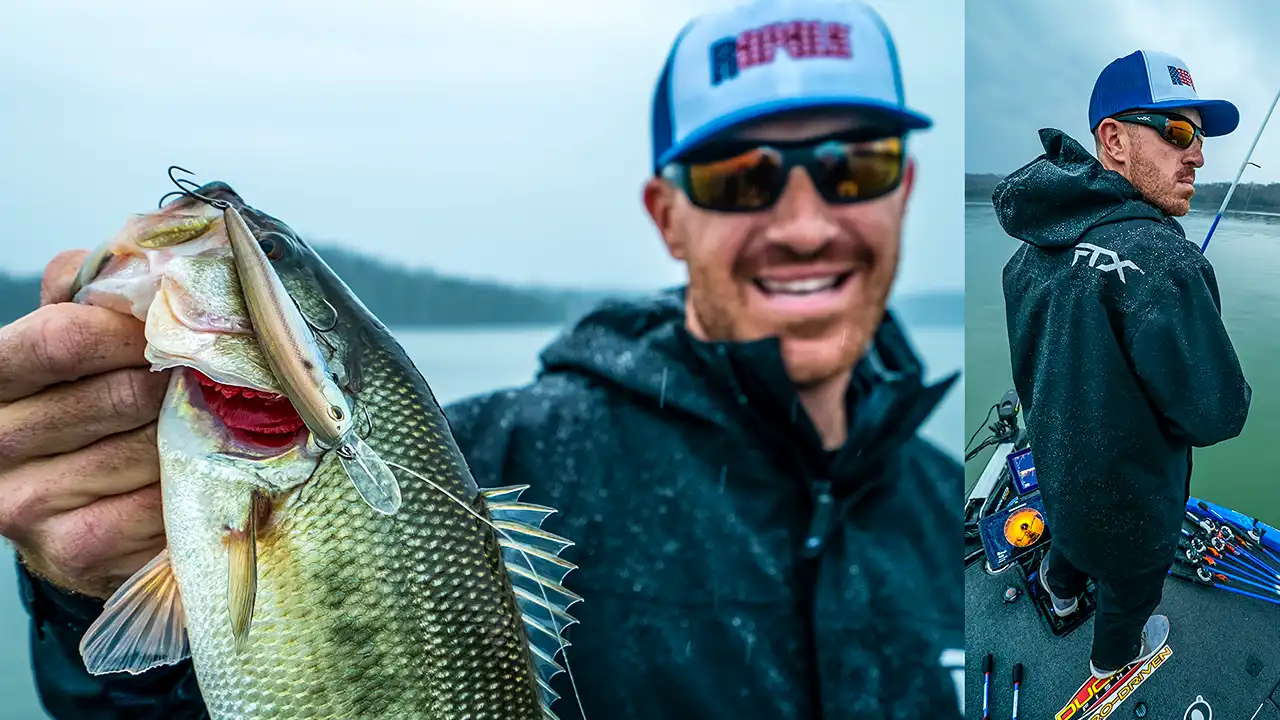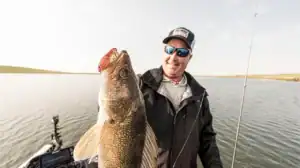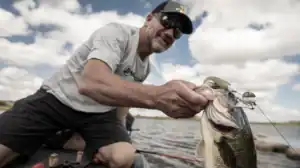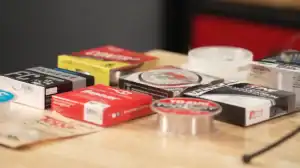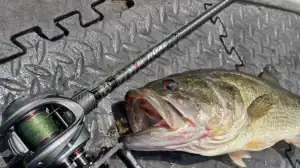Wired2fish had the unique opportunity to spend a day in the boat with Jacob Wheeler and document his approach to finding and establishing prespawn bass fishing patterns on a highland reservoir. With a pile of rods on the deck, Wheeler uses his instincts, knowledge of highland reservoirs, and bass behavior to find and trigger fish spanning deeper main lake spots to warmer stretches of shoreline bank. “This is the bass rut. They’re heading to the bank; you need to intercept them in transit.
Wheeler stresses the importance of interpreting factors such as water temperature and clarity, reading the bank (different rock types), and figuring out the depth zone the bass are hanging. From there, he dials his presentation, focusing on running depth and triggering attributes. Not surprisingly, a jerkbait performed well on suspended bass staging to move up, while a mid-depth crankbait rummaging across the bottom trigged bass relating to bank rock. Both lures call fish in from a distance and allow you to cover water quickly.
Multiple patterns usually happen simultaneously on complex reservoirs, and it’s our job to figure out as many patterns as possible. Wheeler believes that anglers tend to rush the bass in the spring. Just because it’s warm out doesn’t mean they’re all on the bank getting ready to spawn. There’s a significant lag between air and water temperature, so don’t overlook targeting deeper or more main lake bass populations during the prespawn. Wheeler also highlights that many bass spawn on the main lake, not just up in creek arms and pockets.
After establishing a viable main lake bite around humps extending off of points, he pivots to the bank to try to find another pattern. Bites can change daily or even by the hour on highland reservoirs. A tournament angler needs some options, so don’t obsess about getting super-dialed. Next, Wheeler targets bass around bluff ends and transitional banks leading into pockets. His bass come from distinct areas with shale rock and a creek or river channel nearby. “I just need a clue” for tournament day. For Wheeler, it’s about getting a taste for a bite and remaining agile to what the next day brings.
Lastly, he advises just dropping your trolling motor and running the bank with a handful of your favorite crankbaits if you’re struggling to find something. Do this to contact your first fish. The first bass is an essential clue to start refining your day on the water.
TACKLE USED (retail links)
JERKBAIT SETUP
- JERKBAIT – 13 Fishing Loco Special Buy at Tackle Warehouse
- ROD – Duckett J. Wheeler Series Casting Rod 6’10” Medium Buy at Tackle Warehouse Buy at Academy
- REEL – Duckett Jacob Wheeler JWC Paradigm 100 Casting Reel, 7.5:1 Buy at Tackle Warehouse
- LINE (jerkbait and crankbait) – Sufix Advance Fluorocarbon, 12-pound Buy at Tackle Warehouse Buy at Omnia Fishing
CRANKBAIT SETUP
- CRANKBAIT – Rapala Dives-To Series DT-8, color – Demon Buy at Tackle Warehouse Buy at Omnia Fishing
- ROD – Duckett J. Wheeler Series Casting Rod 7’2″ Med Hvy Composite Buy at Tackle Warehouse Buy at Academy
- REEL – Duckett Jacob Wheeler JWC Paradigm 100 Casting Reel, 6.8:1 Buy at Tackle Warehouse
